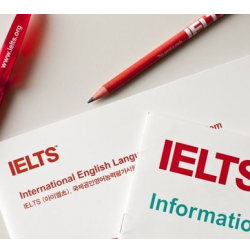Language Acquisition vs Language Learning

۱۴ بهمن ۱۳۹۶
Language Acquisition vs Language Learning
According to linguists, there is an important distinction between language acquisition and language learning.
As you may well have noticed, children acquire their mother tongue through interaction with their parents and the environment that surrounds them. Their need to communicate paves the way for language acquisition to take place. As experts suggest, there is an innate capacity in every human being to acquire language.
By the time a child is five years old, s/he can express ideas clearly and almost perfectly from the point of view of language and grammar. Although parents never sit with children to explain to them the workings of the language, their utterances show a superb command of intricate rules and patterns that would drive an adult crazy if s/he tried to memorize them and use them accurately. This suggests that it is through exposure to the language and meaningful communication that a first language is acquired, without the need of systematic studies of any kind. When it comes to second language learning in children, you will notice that this happens almost identically to their first language acquisition. And even teachers focus more on the communicative aspect of the language rather than on just rules and patterns for the children to repeat and memorize. In order to acquire language, the learner needs a source of natural communication.
The emphasis is on the text of the communication and not on the form. Young students who are in the process of acquiring a second language get plenty of “on the job” practice. They readily acquire the language to communicate with classmates.
In short, we see this tendency in which second language teachers are quite aware of the importance of communication in young learners and their inability to memorize rules consciously (although they will definitely acquire them through a hands-on approach just as they did with their mother tongue).
Unfortunately, when it comes to adult students, a quick look at the current methodologies and language courses available clearly shows that communication is set aside, neglected or even disregarded. In almost all cases, courses revolve around grammar, patterns, repetitions, drillings and rote memorization without even a human interlocutor to interact with.
The very same courses that promise you language independence and the ability to communicate upon completion of the courses do NOT offer you a single chance to engage in meaningful conversations. How many times have you bought or read about “the ultimate language course on CD” in which the learner simply has to sit in front of a computer to listen to and repeat words and phrases time and again. That is not communication. That is the way you train a parrot! The animal will definitely learn and repeat a few phrases and amuse you and your friends, but it will never ever be able to communicate effectively.
How could you be expected to communicate if you are never given the chance to speak with a real person? Language without real communication is as useless as Saint Valentine’s day without lovers or Children’s day without kids.
In language learning, students have conscious knowledge of the new language and can talk about that knowledge.
They can fill in the blanks on a grammar page. Research has shown, however, that knowing grammar rules does not necessarily result in good speaking or writing. A student who has memorized the rules of the language may be able to succeed on a standardized test of English language but may not be able to speak or write correctly.
As teachers, it is our duty to make sure that our students “acquire” rather than “learn” the language.
http://www.eslbase.com/teaching/language-acquisition-vs-language-learning


